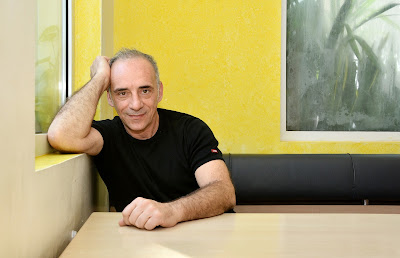The
award-winning Marathi film, ‘The Silence’, which was shown in
Kochi recently, focuses on the damage wrought by child sex abuse
Photos: Ashwini Sidwani; a scene from the film
12-year-old
Chini lives an idyllic life at a village in the Konkan region of
Maharashtra. She plays with pebbles under a tree, amidst the
ceaseless twitter of birds. There is a river nearby. She sits on the
bank and watches her father trying to catch fish. Sometimes, she
goes with a neighbourhood boy to catch cuckoos in the forest. There
is a constant smile on her face. Her father, a candy seller, loves
her, as well as her elder sister, Manda, unconditionally.
Manda
lives in Mumbai and works as an extra in Hindi films. Their mother
had died at Chini’s birth. When Chini has her first periods, her
father does not know what to do. He secures the help of his
brother-in-law who agrees to take Chini to live with his wife in a
nearby town. Sadly, the unexpected happens. The uncle, a grain
merchant, as well as a womaniser, rapes Chini.
Thereafter,
things go out of control, scarring the lives of several people.
‘The
Silence’ is a deeply moving Marathi film, with an enormous
intensity and sincerity invested in each scene. Made by
award-winning director Gajendra Ahire, it stars Raghubir Yadav as
Chini’s dad and
Nagraj
Manjule as the uncle. The story is told in flashback, with the
voice-over belonging to Chini’s aunt.
The
92-minute feature film was screened in mid-November at the All
Lights India International Film Festival at Kochi. Just before that,
'The Silence' became the first-ever Indian film to be shown at the
Brasilia International Film Festival. In July, Ahire had won the
'German Star of India 2015, Director’s Vision' award at the Indian
Film Festival in Stuttgart, Germany.
At
Kochi, sitting on a low sofa at the VIP Lounge of the Cinepolis, and
sipping a cup of tea, is Ashwini Sidwani, the writer of the story.
She belongs to SMR Productions, which makes television serials for
Doordarshan. “There was a project I was researching, with a NGO
called Majlis, which is run by [activist] Flavia Agnes,” says
Ashwini. “We wanted to do one-hour stories of domestic violence.
It was while doing this that I came across a true story of child
abuse.”
So
she wrote the screenplay. But when she narrated it in the office,
her colleagues suggested that it would be better to make a film,
rather than a television serial, which comes and goes. So she told
the story to Gajendra who said yes immediately.
In
the actual story, the child, who lives in Kolhapur, mentioned the
abuse to her elder sister when she came on a visit from Mumbai two
months later. They filed a police complaint. “But since it was
done so late, the police were unable to gather any evidence,” says
Ashwini. “The uncle vanished. Whenever anything happens, you have
to lodge a complaint within 24 hours or before the victim has had a
bath.”
To
ensure that happens, parents should keep a sharp eye on their
children. “If they sense something is wrong, they should question
the child,” says Ashwini. “Often, they are too young to
understand what is happening.”
The
film is now doing the festival circuit. Many good Marathi films are
being made now, including the unforgettable ‘Court’, which was
India’s entry for the Foreign Language Oscar. And Ashwini puts it
down to the encouragement by the state government. “If your film is
selected for any festival, they give you a subsidy of Rs 30 lakh,”
says Ashwini. “It is a big boost. So many talented filmmakers are
venturing to make meaningful films.”
(The
New Indian Express, Kochi and Thiruvananthapuram)





















